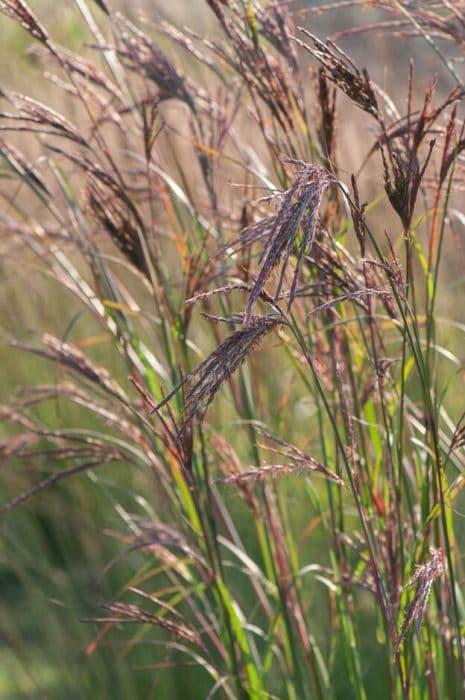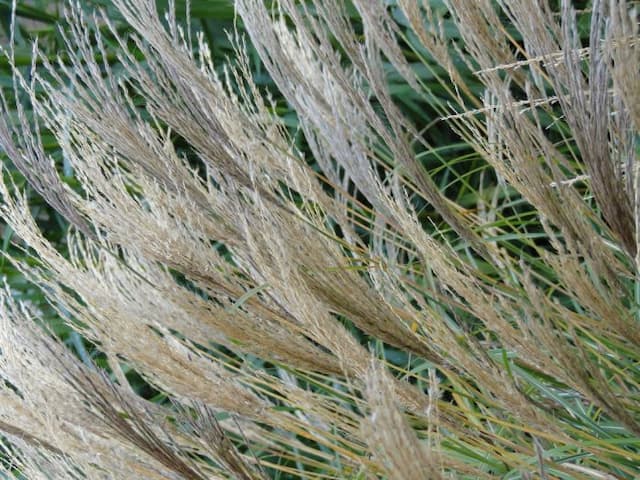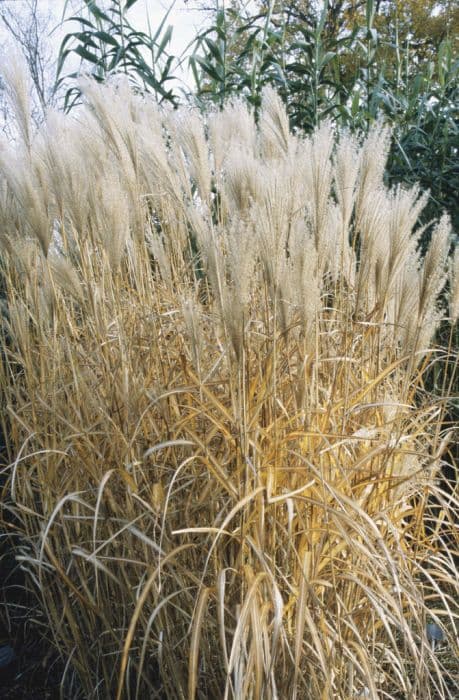Wheat Triticum aestivum



ABOUT
Wheat is a type of grass that typically grows between 2 and 4 feet tall, although some varieties can reach up to 6 feet tall. The plant has long, narrow leaves and a hollow stem that is usually between 1/4 and 1/2 inch in diameter. The seeds of the wheat plant are contained in spikelets that are arranged in a dense cluster known as a head or ear, which can range from 2 to 6 inches in length.
About this plant
 Names
NamesFamily
Poaceae
Synonyms
Common wheat, Bread wheat, Spring wheat, Summer wheat
Common names
Triticum sativum, Triticum vulgare
 Toxicity
ToxicityTo humans
Wheat is not toxic to humans when consumed in normal amounts. However, some individuals with gluten intolerance or celiac disease may experience adverse reactions to wheat due to the gluten protein it contains.
To pets
In animals, wheat can be a nutritious part of their diet, but it can also cause digestive issues if consumed in excess or if the animal is intolerant to gluten. Additionally, certain parts of the wheat plant, such as the leaves and stems, can be toxic to livestock if consumed in large quantities.
 Characteristics
CharacteristicsLife cycle
Annuals
Height
Up to 6 feet
Plant type
Herb
Hardiness zones
1
Native area
Western Asia
Benefits
 General Benefits
General BenefitsSource of food: Wheat is a primary source of food for humans and animals, providing carbohydrates, protein, and other essential nutrients.
Versatility: Wheat can be used to make a variety of foods, such as bread, pasta, cereals, and snacks, making it a versatile crop.
Economic value: Wheat is an important cash crop for many farmers, and it contributes significantly to the economies of many countries.
Soil improvement: Wheat is a good rotational crop and can help improve soil fertility by adding organic matter and reducing erosion.
Environmental benefits: Wheat can also be used as a cover crop to help control weeds, reduce soil erosion, and improve soil health.
Energy production: Wheat can be used to produce biofuels, such as ethanol, which can help reduce dependence on fossil fuels.
Preservation of cultural heritage: Wheat has played an important role in human history and is deeply embedded in the cultural heritage of many communities around the world. Medical Properties
Medical PropertiesRich in nutrients: Wheat is an excellent source of nutrients such as fiber, protein, B vitamins, iron, and zinc, which are essential for maintaining good health.
Helps manage weight: Whole wheat is high in fiber, which helps to keep you feeling full for longer, thus reducing your overall calorie intake.
Promotes heart health: Wheat is rich in fiber, which helps to lower cholesterol levels and reduces the risk of heart disease.
Helps regulate blood sugar levels: Wheat contains complex carbohydrates that are digested slowly, which helps to regulate blood sugar levels.
Good for digestive health: The fiber content in wheat helps to regulate bowel movements, preventing constipation and promoting good digestive health.
Anti-inflammatory properties: Wheat contains compounds that have anti-inflammatory properties, which may help to reduce inflammation in the body.
Boosts immune system: Wheat contains selenium, which is essential for a healthy immune system.
Helps prevent anemia: Wheat is a good source of iron, which is essential for the production of red blood cells and preventing anemia. Air-purifying Qualities
Air-purifying QualitiesWheat does not have significant air purifying qualities as it is primarily grown as a crop plant and is not typically used as an ornamental plant in indoor settings.
 Other Uses
Other UsesStraw bale construction: Wheat straw can be used as a natural and sustainable insulation material in building construction.
Animal bedding: Wheat straw can be used as bedding for animals such as horses, chickens, and rabbits.
Artistic material: Wheat can be used as a medium for artistic expression, such as weaving straw into baskets or creating wheat stalk sculptures.
Biofuels: Wheat straw can be used to create biofuels such as ethanol.
Soil erosion control: Wheat can be planted as a cover crop to prevent soil erosion and improve soil health.
Interesting Facts
 Feng Shui
Feng ShuiIn feng shui, wheat is believed to represent abundance, prosperity, and fertility. It can be used to attract wealth and good luck to a home or business.
 Zodiac Sign Compitability
Zodiac Sign CompitabilityAs for astrology, there is no specific zodiac sign compatibility associated with wheat.
 Plant Symbolism
Plant SymbolismIn many cultures, wheat is a symbol of life, rebirth, and resurrection. It is associated with various deities and religious ceremonies. Wheat is also a symbol of sustenance, nourishment, and fertility. It can represent a bountiful harvest, community, and sharing.
 Water
WaterWheat is generally grown outdoors and is watered naturally by rainfall or irrigation.
 Light
LightWheat grows best in full sun, which is defined as six or more hours of direct sunlight per day. However, it can also grow in partial shade.
 Temperature
TemperatureWheat is a cool-season crop and can tolerate temperatures as low as 32°F (0°C) and as high as 85°F (29°C). The ideal temperature for growing wheat is between 60°F (15°C) and 70°F (21°C).
 Pruning
PruningWheat plants do not require pruning.
 Cleaning
CleaningNot needed
 Soil
SoilThe best soil for wheat is a well-draining loamy soil with a pH between 6.0 and 7.5. Wheat prefers soil that is rich in organic matter and has good fertility.
 Repotting
RepottingWheat is typically grown outdoors in fields, so it is not usually repotted.
 Humidity & Misting
Humidity & MistingThe best humidity level for wheat varies depending on the stage of growth. Wheat needs moderate humidity during germination and early growth, but as it approaches maturity, lower humidity levels are required to prevent disease and ensure proper grain development. In general, humidity levels between 40% and 70% are ideal for wheat.
 Suitable locations
Suitable locationsIndoor
Not growing
Outdoor
Cultivated almost all over the world during the growing season
Hardiness zone
USDA 2 and higher
 Life cycle
Life cycleWheat has several stages of growth, which can be broadly categorized as germination, vegetative growth, reproductive growth, and maturation.
Germination: This stage begins when a seed is planted in the soil. Wheat seeds require moist soil and a temperature range of 50-75°F to germinate. The seeds will begin to sprout after 3-5 days.
Vegetative growth: During this stage, the wheat plant will grow leaves and stems. The plant requires consistent watering and temperatures of around 60-70°F. This stage lasts for about 60-80 days.
Reproductive growth: The reproductive stage of wheat occurs when the plant begins to form its head, which contains the kernels. This stage usually occurs between 80-120 days after planting, depending on the variety of wheat and environmental conditions.
Maturation: During this stage, the wheat plant completes its life cycle and the kernels ripen. The wheat plant will turn yellow and the heads will droop slightly as they become heavy with grain. Harvesting usually occurs about 5-7 days after the wheat has turned yellow.
The planting, flowering, and harvest of wheat can vary depending on the variety of wheat, climate, and location. However, generally, wheat is planted in the fall and harvested in the summer. The flowering stage usually occurs in the spring. Propogation
PropogationPropogation time
Fall or spring
Wheat is typically propagated through seeds. The best time to plant wheat is in the fall, between September and November, depending on the region. The specific month for planting may vary depending on the climate and weather conditions in the area. Wheat can also be propagated through tillering, which involves allowing the plant to grow additional shoots from the base. However, this is not a common method of propagation for commercial wheat production.
 Pests
PestsAphid, Bagworms
 Diseases
DiseasesPowdery mildew, Rust









